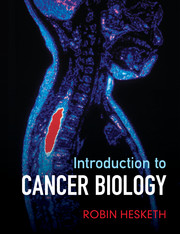Book contents
- Frontmatter
- Contents
- Acknowledgements
- Foreword
- Introduction
- 1 Lessons from epidemiology
- 2 Causes of cancer
- 3 Signalling in normal cells
- 4 ‘Cancer genes’: mutations and cancer development
- 5 What is a tumour?
- 6 Cancer signalling networks
- 7 The future of cancer prevention, diagnosis and treatment
- 8 The future of cancer in the post-genomic era
- Appendix A Tumour grading and staging
- Appendix B Targets of specific anti-cancer drugs
- Appendix C Classes of major oncoproteins
- Appendix D Major tumour suppressor genes
- Appendix E Ten major cancers at a glance
- Glossary and abbreviations
- Bibliography
- Index
- Plate Section
5 - What is a tumour?
Published online by Cambridge University Press: 05 February 2013
- Frontmatter
- Contents
- Acknowledgements
- Foreword
- Introduction
- 1 Lessons from epidemiology
- 2 Causes of cancer
- 3 Signalling in normal cells
- 4 ‘Cancer genes’: mutations and cancer development
- 5 What is a tumour?
- 6 Cancer signalling networks
- 7 The future of cancer prevention, diagnosis and treatment
- 8 The future of cancer in the post-genomic era
- Appendix A Tumour grading and staging
- Appendix B Targets of specific anti-cancer drugs
- Appendix C Classes of major oncoproteins
- Appendix D Major tumour suppressor genes
- Appendix E Ten major cancers at a glance
- Glossary and abbreviations
- Bibliography
- Index
- Plate Section
Summary
Most aspects of normal cellular behaviour are subverted in the development of tumours. These changes include a switch to aberrant signalling in both pro- and anti-proliferative pathways, the acquisition of the capacity to avoid cell death and to replicate indefinitely, and perturbation of the normal metabolic profile. In addition, dynamic interactions between tumours and normal cells in their environment can progressively co-opt inflammatory and immune responses so that they support rather than inhibit tumour growth and can recruit host endothelium to provide a blood supply. The defining feature of malignant tumours is the ability of cells to migrate through adjacent tissue and eventually to colonise distant sites. This process of metastasis is poorly understood at the molecular level. It remains essentially untreatable and is the major cause of cancer death.
Introduction
Cancer is a group of diseases characterised by abnormal cell growth through which cells may acquire the potential to disperse (metastasise) from the site of origin (primary tumour) to other sites in the body (secondary tumours). The word tumour comes from the Latin ‘tumor’ referring to the swelling that occurs as a consequence of these abnormal growths and is now used interchangeably with ‘neoplasm’, meaning new or abnormal cell growth. This definition of neoplasm leads to a major division of cancers into malignant and benign. The terms ‘tumour’ and ‘cancer’ have also come to be used synonymously but a distinction might be made in that metastatic cancer occurs because a tumour has acquired the capacity to invade its surroundings, the first step in spreading to secondary sites. This involves the destruction of other cells, critically some that make up the vessels of the circulatory (blood and lymphatic) systems. Once the tumour cell can get into the circulation it can be carried to other locations: it has become malignant. The implication, of course, is that there are tumours that are not malignant.
- Type
- Chapter
- Information
- Introduction to Cancer Biology , pp. 103 - 152Publisher: Cambridge University PressPrint publication year: 2012



